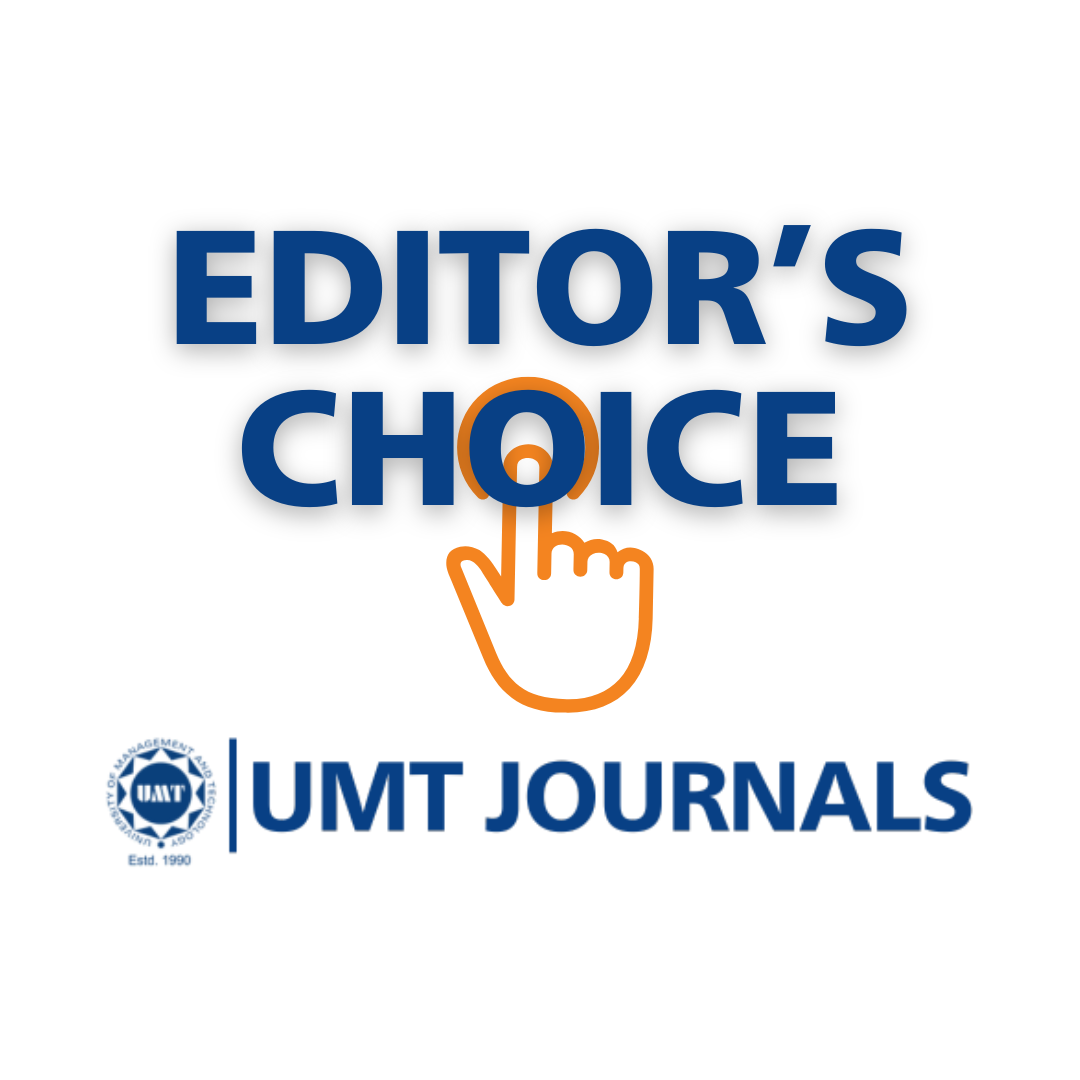Carcinogenic Effects of Lead (Pb) on Public Health
Abstract
 Abstract Views: 0
Abstract Views: 0
Lead (Pb) is a potentially hazardous metal that penetrates the bones and blood as well as other major organs including the skin, liver, kidneys, and brain after being absorbed by the body. It is the most abundant heavy metal found in nature and utilized for a variety of industrial purposes. Lead is used in the manufacturing of bearings and printing fonts, as well as in the manufacturing of sulfuric acid, cable coverings, soldering products, guards in nuclear power stations, shields, vessels for radiation emitting materials, paints, ceramics, chemicals, and building structures. It is advantageous for physiological and biochemical processes in living beings in low concentrations. However, when it surpasses a specific threshold, it causes significant health issues. Lead is extremely persistent in nature and its continued use causes serious toxicological impacts, such as renal failure, carcinogenicity, high blood pressure, hematological effects, brain damage, reproductive system complications (in both men and women), bone screening, heart diseases, and liver damage. The available treatments, such as chelation therapy and other types of medicines, can help to reduce its adverse effects. The objective of this review is to delineate the adverse effects of lead on the human body, spanning from childhood to adulthood. Lead is a cumulative toxicant that affects multiple body systems and is particularly harmful to young children. The second major goal of this study is to define lead contamination and identify its sources and levels.
Downloads
References
Boskabady M, Marefati N, Farkhondeh T, Shakeri F, Farshbaf A, Boskabady MH. The effect of environmental lead exposure on human health and the contribution of inflammatory mechanisms, a review. Environ Int. 2018;120:404–420. https://doi.org/10.1016/j.envint.2018.08.013
Khlifi R, Hamza-Chaffai A. Head and neck cancer due to heavy metal exposure via tobacco smoking and professional exposure: a review. Toxicol Appl Pharm. 2010;248(2):71–88. https://doi.org/10.1016/j.taap.2010.08.003
Jaishankar M, Mathew BB, Shah MS, Gowda KR. Biosorption of few heavy metal ions using agricultural wastes. J Environ Pollut Human Health. 2023;2(1):1–6. https://doi.org/10. 12691/jephh-2-1-1
EFSA Guidance for those carrying out systematic reviews European Food Safety Authority. Application of systematic review methodology to food and feed safety assessments to support decision making. EFSA J. 2010;8(6):e1637. https://doi.org/10 .2903/j.efsa.2010.1637
Al Osman M, Yang F, Massey IY. Exposure routes and health effects of heavy metals on children. Biometals. 2019:32(4):563–573. https://doi.org/ 10.1007/s10534-019-00193-5
Omar S, Muhamad MS, Te Chuan L, Hadibarata T, Teh ZC. A review on lead sources, occurrences, health effects, and treatment using hydroxyapatite (hap) adsorbent made from fish waste. Water Air Soil Pollut. 2019;230:e275. https://doi.org/10. 1007/s11270-019-4312-9
May GJ, Davidson A, Monahov B. Lead batteries for utility energy storage: a review. J Energy Storage. 2018;15:145–157. https://doi.org/10. 1016/j.est.2017.11.008
Ure AD, Ghosh MK, Rappo M, Dauphin R, Dooley S. Rational design and testing of anti-knock additives. Energies. 2020;13(18):e4923. https://doi.org/10.3390/en13184923
Rogale D, Majstorović G, Firšt Rogale S. Comparative analysis of the thermal insulation of multi-layer thermal inserts in a protective jacket. Materials. 2020;13(12):e2672. https://doi.org/10.3390/ma13122672
AbuAlRoos NJ, Amin NA, Zainon R. Conventional and new lead-free radiation shielding materials for radiation protection in nuclear medicine: a review. Radi Phy Chem. 2019;165:e108439. https://doi.org/10. 1016/j.radphyschem.2019.108439
Pain DJ, Mateo R, Green RE. Effects of lead from ammunition on birds and other wildlife: a review and update. Ambio. 2019;48(9):935–953. https:// doi.org/10.1007/s13280-019-01159-0
Lodo K, Dalgleish C, Patel M, Veitch M. A novel public health threat – high lead solder in stainless steel rainwater tanks in Tasmania. Aust New Zealand J Pub Health. 2018;42(1):77–82. https://doi.org/10.1111/1753-6405.12723
Wasson SJ, Guo Z, McBrian JA, Beach LO. Lead in candle emissions. Sci Total Environ. 2002;296(1):159–174. https://doi.org/10.1016/S0048-9697(02)00072-4
Dhimal M, Karki KB, Aryal KK, et al. High blood levels of lead in children aged 6-36 months in Kathmandu Valley, Nepal: A cross-sectional study of associated factors. PLOS ONE. 2017;12(6):e0179233. https://doi.org/ 10.1371/journal.pone.0179233
Ji JS, Schwartz J, Sparrow D, Hu H, Weisskopf MG. Occupational determinants of cumulative lead exposure: analysis of bone lead among men in the VA normative aging study. J Occup Environ Med. 2014;56(4):435–40. https://doi.org/ 10.1097/JOM.0000000000000127
Wieczorek J, Baran A, Urbański K, Mazurek R, Klimowicz-Pawlas A. Assessment of the pollution and ecological risk of lead and cadmium in soils. Environ Geochem Health. 2018;40(6):2325–2342. https://doi. org/10.1007/s10653-018-0100-5
Shubina OS, Dudenkova NA. The effect of lead on the process of spermatogenesis in sex glands of male albino rats. Vet World. 2016;9(10):1129–1134. https://doi.org/10.14202/vetworld.2016.1129-1134
Pal M, Sachdeva M, Gupta N, Mishra P, Yadav M, Tiwari A. Lead exposure in different organs of mammals and prevention by curcumin-nanocurcumin: a review. Biol Trace Elem Res. 2015;168(2):380–391. https://doi.org/10.1007/s12011-015-0366-8
Rehman K, Fatima F, Waheed I, Akash MS. Prevalence of exposure of heavy metals and their impact on health consequences. J Cell Biochem. 2018;119(1):157–184. https://doi.org/ 10.1002/jcb.26234
Kumar S, Islam R, Akash PB, et al. Lead (Pb) contamination in agricultural products and human health risk assessment in Bangladesh. Water Air Soil Pollut. 2022;233(7):e257. https://doi.org/10.1007/s11270-022-05711-9
Winiarska-Mieczan A, Jachimowicz K, Kwiecień M, et al. The content of cd and pb in herbs and single-component spices used in polish cuisine. Biolog Trace Element Res. 2023;201(7):3567–3581. https://doi. org/10.1007/s12011-022-03437-7
Charkiewicz AE, Jamiołkowski J, Pędziński B, et al. Changes in dietary patterns and the nutritional status in men in the metallurgical industry in poland over A 21-year period. Ann Nutr Metab. 2018;72(2):161–171. https://doi.org/10.1159/000485389
Krzywy I, Krzywy E, Pastuszak-Gabinowska M, Brodkiewicz A. Lead--is there something to be afraid of? Ann Acad Med Stetin. 2010;56:118–128.
Fu Z, Xi S. The effects of heavy metals on human metabolism. Toxicol Mech Methods. 2020;30(3):167–176. https:// doi.org/10.1080/15376516.2019.1701594
Jin Y, Liu P, Wu Y, et al. A systematic review on food lead concentration and dietary lead exposure in China. Chin Med J. 2014;127(15):2844–2849.
Rusin M, Domagalska J, Rogala D, Razzaghi M, Szymala I. Concentration of cadmium and lead in vegetables and fruits. Sci Rep. 2021;11(1):e11913. https://doi.org/10.1038/s41598-021-91554-z
Mason LH, Harp JP, Han DY. Pb neurotoxicity: neuropsychological effects of lead toxicity. Biomed Res Int. 2014;2014:e840547. https://doi.org/ 10.1155/2014/840547
Jakubowski M. Biological monitoring versus air monitoring strategies in assessing environmental–occupational exposure. J Environ Monit. 2012;14(2):348–352. https://doi.org/ 10.1039/C1EM10706B
Klingberg T. Training and plasticity of working memory. Trends Cogn Sci. 2010;14(7):317–324. https://doi.org/ 10.1016/j.tics.2010.05.002
Blair C, Ursache A. A bidirectional model of executive functions and self-regulation. In: Vohs KD, Baumeister RF, eds. Handbook of self-regulation: Research, theory, and applications. The Guilford Press; 2011:300–320.
Richards JC, Rodgers TS. Approaches and methods in language teaching. Cambridge University Press; 2014.
Wani AL, Ara A, Usmani JA. Lead toxicity: a review. Interd Tox. 2015;8(2):55–64.
Ferguson KT, Cassells RC, MacAllister JW, Evans GW. The physical environment and child development: an international review. Int J Psychol. 2013;48(4):437–468. https://doi.org/10.1080/00207594.2013.804190
Fralick M, Thomspson A, Mourad O. Lead toxicity from glazed ceramic cookware. Canadaian Med Ass J. 2016;188(17-18):E521–e524. https://doi.org/10.1503/cmaj.160182
Egendorf SP, Groffman P, Moore G, Cheng Z. The limits of lead (Pb) phytoextraction and possibilities of phytostabilization in contaminated soil: a critical review. Int J Phytoremed. 2020;22(9):916–930. https://doi.org/10.1080/15226514.2020.1774501
Al-Saleh I, Al-Enazi S, Shinwari N. Assessment of lead in cosmetic products. Regulatory toxicology and pharmacology. Regul Toxicol Pharmacol. 2009;54(2):105–113. https://doi.org/10.1016/j.yrtph.2009.02.005
Kaur P, Singh KJ, Thakur S. Evaluation of the gamma radiation shielding parameters of bismuth modified quaternary glass system. AIP Conf Proc. 2018;1953(1):e090031. https://doi.org/10.1063/1.5032878
Amzal B, Julin B, Vahter M, Wolk A, Johanson G, Åkesson A. Population toxicokinetic modeling of cadmium for health risk assessment. Environ Health Perspect. 2009;117(8):1293–1301. https://doi.org/10.1289/ehp.0800317
Ghaly WA, Mohsen HT, Rashad AM, Helal AI. Elemental Composition of some imported toys and handbags by X-ray techniques. J Am Sci. 2020;9:476–479.
Mitra P, Sharma S, Purohit P, Sharma P. Clinical and molecular aspects of lead toxicity: An update. Crit Rev Clin Lab Sci. 2017;54(7-8):506–528. https://doi.org/10.1080/10408363.2017.1408562
Naz S, Chatha AM, Danabas D, Iqbal S. Fish Diversity at head panjnad and its genetic identification by DNA barcoding technology. BioSci Rev. 26;4(4):73–88. https://doi.org/10. 32350/BSR.44.04
Abam E, Okediran BS, Odukoya OO, Adamson I, Ademuyiwa O. Reversal of ionoregulatory disruptions in occupational lead exposure by vitamin C. Environ Toxicol Pharmacol. 2008;26(3):297–304. https://doi.org/ 10.1016/j.etap.2008.05.008
Khan DA, Qayyum S, Saleem S, Ansari WM, Khan FA. Lead exposure and its adverse health effects among occupational worker’s children. Toxicol Ind Health. 2010;26(8):497–504. https://doi.org/ 10.1177/0748233710373085

Copyright (c) 2023 Ahmad Manan Mustafa Chatha, Saima Naz

This work is licensed under a Creative Commons Attribution 4.0 International License.
BSR follows an open-access publishing policy and full text of all published articles is available free, immediately upon publication of an issue. The journal’s contents are published and distributed under the terms of the Creative Commons Attribution 4.0 International (CC-BY 4.0) license. Thus, the work submitted to the journal implies that it is original, unpublished work of the authors (neither published previously nor accepted/under consideration for publication elsewhere). On acceptance of a manuscript for publication, a corresponding author on the behalf of all co-authors of the manuscript will sign and submit a completed the Copyright and Author Consent Form.









